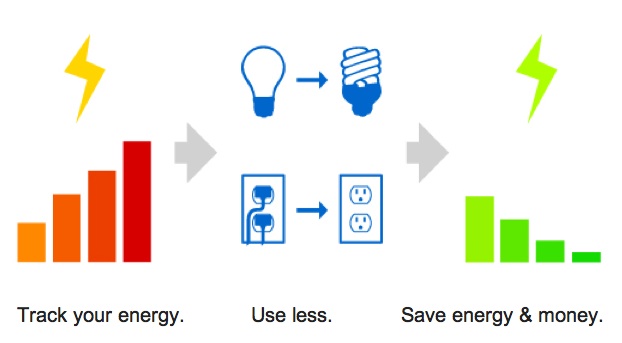
Image Credit: Google
The White House recently announced new initiatives aimed at making the electric grid more energy efficient, reliable, less polluting, and more consumer friendly. The term “smart grid” is used in the White House press release, mainly in reference to tools and services designed to help consumers monitor their power usage in real time, and manage it economically.
Indeed, there’s plenty of evidence to show that currently available monitoring and power-management technology can save consumers money on their energy bills. The trick, in many cases, is getting people to actually use the dashboards, sensors, transmitters, and monitoring services. As one industry analyst observed, apathy can be a bigger obstacle than ignorance when it comes to cutting energy consumption. That issue may have come into play with PowerMeter, Google’s energy management tool, which, the company announced last month, will be retired from service on September 16 because it didn’t catch on as hoped.
“Momentum is building toward making energy information more readily accessible, and it’s exciting to see others drive innovation and pursue opportunities in this important new market,” Google said in a blog post that also mentions the White House initiatives. “We’re proud of what we’ve accomplished with PowerMeter and look forward to what will develop next in this space.”
An evolving energy-management landscape
PowerMeter users can download data they have stored in their account any time before the September 16 cutoff. A competing online energy-management tool, Microsoft Hohm, is still up and running — but not for long. As Microsoft announced on June 30, it will follow Google’s lead and soon shut down Hohm, which is due to retire on May 31, 2012. Hohm’s effectiveness, like that of PowerMeter, has hinged on how much information users input about their home and its energy use. And, as did PowerMeter, Hohm works best when it incorporates customer-usage data fed directly from partner utilities, which, in Microsoft’s case, are currently limited to the Sacramento Municipal Utility District, Seattle City Light, and Xcel Energy. As technology site Ars Technica noted, “the timing of the announcement suggests that Microsoft only developed Hohm for strategic reasons.”
Another system that offers usage tracking through partnerships with utilities, OPOWER, still seems to be attracting users and adding employees. Key to the apparent success of this service is that it includes general usage information about other homeowners in the community, thereby adding peer pressure to the incentives to save energy.
Anything to help overcome that apathy.
Weekly Newsletter
Get building science and energy efficiency advice, plus special offers, in your inbox.














4 Comments
Microsoft Hohm
Correction: Microsoft Hohm is being discontinued May 31st, 2012. This is a bummer, both products were really great. The biggest hurdle for me though (with both products) was that: 1. My electricity company didn't support either and 2. The TED and other energy tracking devices weren't very reliable or time-tested.
Text updated
Thank you for the heads up and observations, Pete. I've altered the text to include Hohm's upcoming retirement.
reliable?
Pete: could you explain what you mean by not reliable
even without these services, devices/systems like TED still work; curious what is not so hot about them
i myself have avoided them becaue i can freely do some simple section by timing the meter itself
Ted reliability....
Hi Bob,
I have a TED5000 (http://www.theenergydetective.com/) installed and a second one waiting for me to find time for it all.. What I have found is that placement of the Gateway unit is critical for a number of reasons...
1) they need to be able to communicate over the electrical lines, which can sometimes be problematic...
2) The gateway will lock up if it overheats, which is, unfortunately for me, happening too often in my location of choice (hall Closet where the rest of my networking gear is..)
3) the RF remote is almost, but not quite useful - it seems to lag so very far behind current readings...
Also, I find the TED default web interface to be bulky and sort of clumsy - I found some open source SW that does more what I want to do and of course I'm working on a vent for the closet, but after folling with mine for some time I'd have to say it's NOT for the average consumer..
You can see how I use mine here:
http://www.mtrcycllvr.org (there is a clear link to the power meter there towards the bottom..)
Now, having said all that, I definitely think the TED or any system that allows me to see in FINE DETAIL my current power consumption in real time is highly cool and it HAS got me to change certain habits - I view lights as the enemy now and laugh at all the conservatives saying that the government has no business regulating light bulbs.. ;-)
The trick is getting that fine grain feedback in real time WITHOUT ANY FUSS... Haven't quite found that solution yet, so for now it's TED hardware and "its-electric" Open Source SW running on my NAS box in the back ground..
Log in or create an account to post a comment.
Sign up Log in